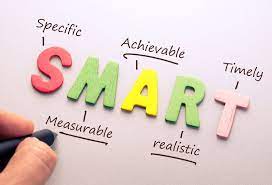In this post Change Specialists CEO, John Dean, shares his tips and steps outlining how to Implement SMART project requirements. This approach supports the success of your programme of work.
Here is John’s step by step guide on how to implement SMART project requirements (Specific, Measurable, Achievable, Relevant, and Time-bound).
Step 1: Specific
My first step in creating SMART project requirements is to make them specific. This requires clear definition around what the outcome of the requirement is.
- Identify the requirement: State what will be done. Be as detailed and precise as possible to avoid ambiguity.
- Define success: Specify what success looks like for this requirement. When the requirement is met, what is the result? This helps ensure everyone understands what’s expected.
- Assign responsibility: Determine who is responsible for this requirement. This gives clear accountability and ensures someone is actively working to fulfil it.
Step 2: Measurable
Next, you need to establish concrete criteria for measuring progress towards the attainment of each requirement.
- Define metrics: Which measurements will indicate progress or completion of the requirement? This can be quantitative, such as a number or percentage, or qualitative such as a certain level of quality or completion.
- Set milestones: Break the requirement down into smaller, more manageable components. Track and measure milestones to assess progress towards meeting the overall requirement.
Step 3: Achievable
My key step is to make sure the requirements are achievable. Consider the resources available and ensure the requirement is realistic.
- Consider resources: What resources (time, money, personnel, equipment, etc.) are available to fulfil this requirement? The requirement must be realistic and align with available resources
- Identify potential challenges: Obstacles and challenges block requirements from being met. Track and plan steps to mitigate.
Step 4: Relevant
Releavent requirements align with the overall project goals and objectives.
- Align with project goals: How does this requirement fit into the bigger picture of the project? If not review and reconsider it.
- Validate with stakeholders: Ensure all relevant stakeholders agree with the requirement and see its value. This helps ensure buy-in and support for the requirement.
Step 5: Time-bound
Requirements are time-bound,. Support this by assigning a specific timeframe for meeting them.
- Set deadlines: Establish clear realistic deadlines for meeting requirements.
- Monitor progress: Regularly check on progress towards completion, identify and make adjustments.
Additional insights for programme management professionals are here.


